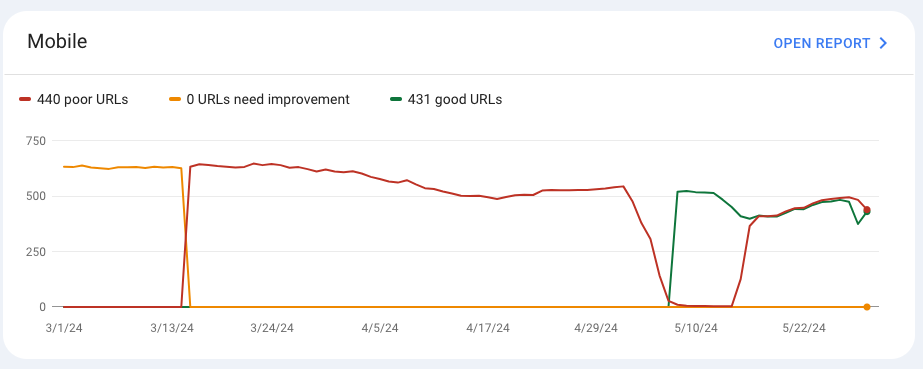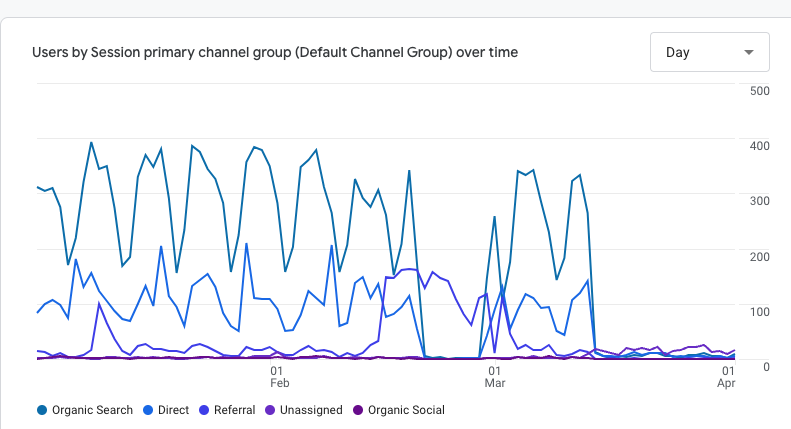Google’s Helpful Content Update recently pushed the Google updating cycle back into the spotlight. However, the reality is search engine updates are part of an SEO’s life. Every year, multiple core updates take place across the Google ecosystem.
The impact of a Google algorithm update is difficult to predict. Some can have detrimental effects on a site, while others can harmlessly pass you by.
If you were hit by a recent Google Core Update (or you’re unsure if you were), you want to identify the potential issue and, if there is one, fix the problem. Even if you haven’t had a catastrophic hit, a slight dip in traffic or clicks can be the perfect motivation to re-evaluate your on-site SEO practices and ensure you’re setting yourself up to withstand future updates.
Let’s see if a core algorithm update negatively impacted you. Then, we’ll consider steps you can take to restore life to your owned digital media and regain your presence in Google search.
The first thing you want to identify is that a Google update actually impacted you. Here are three steps to take:
GSC is the search results side of the equation. It gives you insights into things like average search position, impressions, and click-through rates.
Check your site’s GSC data on and around the date when the last update rolled out. If you see a drop in impressions, clicks, or search result positioning at that time, it may correlate with an update.
In that case, review your core web vitals and make sure your site is performing well. In addition, look for any manual actions that may be on your account. These occur when a human reviewer flags a site for spam-like behavior. When that happens, read the entire manual action description and thoroughly update the marked pages on your site to address the issue.

Once you’ve reviewed GSC, hop over to Google Analytics. This is where you can find data related to user behavior, such as demographics, page views, and bounce rates.
Review the same period of time on and around the latest update and compare it to a period of time prior to the update. Did you lose organic traffic during that time? Did any other healthy metrics dip? If this aligns with a decrease in GSC, chances are an update had something to do with the downturn.

The last step in identifying the issue is figuring out if the SEO damage is sitewide or if it is contained to a select number of pages. Look at both GSC and GA data to see if the decrease in search engine-related activity is occurring on a specific page, a group of pages, or across your entire site.
Start with page-level data in Google Analytics. As you identify pages that are lower, conduct coordinating queries in GSC to see if you lost clicks. Compare these searches to alternative dates that are reasonably removed from an algorithm update.
Once you’ve confirmed that you were hit by an algorithm update and you know the parts of your site that need help, it’s time to take action.
Below are eight different steps you can take to help your site bounce back after a negative experience with an algorithm update.
Make sure you understand what Google is trying to improve before you make adjustments. Research what changes took place in the update that hurt your site. You can usually find this kind of information in unbiased industry publications like Search Engine Journal or Search Engine Land shortly after an update goes live.
Once you know the target areas of the update, review your core web vital metrics again. Is your LCP (loading performance) under 2.5 seconds? Is your site’s mobile responsiveness smooth? There are several tools you can use to conduct an audit of your site when looking for these kinds of website performance shortcomings like SEMRush or Ahrefs. Or, it may be time to bring in an SEO agency to assist.
If an algorithm update hits certain areas of your site, review the page experience for those trouble spots. Do they provide helpful content that moves a conversation forward? Are they written for the user first? Do they cover important keywords for your brand? If so, can you re-optimize technical SEO for those pages for better SEO? Can you clean up and improve the content to fall in line with the update?
Where was your site enjoying strong SERP positioning before the update? Have you slid down the search rankings in areas that are important to generating quality organic traffic for your site? If so, consider if the correlating content addresses the search query it is ranking for. Can you tweak it to better meet search intent? Can you update and enhance the content to be more relevant?
If you want to attract your target audience and nurture leads, don’t simply create fluffy promotional content that works the system. As you review your content, remember to prioritize users first and search engines second. Along with answering basic search intent, make sure you’re offering quality content with unique value, genuine insights, and actionable takeaways for your readers. Unoriginal content or low-quality content won't help you succeed in the current Google ecosystem.
Links are the network of the internet. Backlinks, in particular, are important, as they provide third-party validation that your site is important and relevant. If you’re low on quality backlinks, invest in a good linking strategy that incorporates both SEO-focused backlinks and digital PR to beef them up through mentions, bylines, and similar backlinking strategies.
User experience can make or break a website. If a core update dings your site on its UX, take steps to improve it—for the sake of your target audience as well as your search rankings. Interlink content thoughtfully. Make navigation easy. Do everything you can to facilitate a positive online experience.
Finally, step back and consider your site from a 10,000-foot view. Is your content focused on important themes that are relevant to the industry you’re in? Were you giving your content strategy a healthy amount of attention and investment before? If not, re-evaluate and improve your content workflow to ensure your content is satisfying both Google updates and website user needs moving forward.
If your site is already struggling, use the list of recommendations above to get back on track. Once things are moving in the right direction again, take steps to keep your content helpful, high-quality, and optimized at all times.
If you need help turning your digital marketing around or you want to reinforce your site against future updates but aren’t sure what steps to take, reach out for a free strategy session. Together, we can develop a plan to keep your company healthy and growing, no matter what surprises Google sends your way.